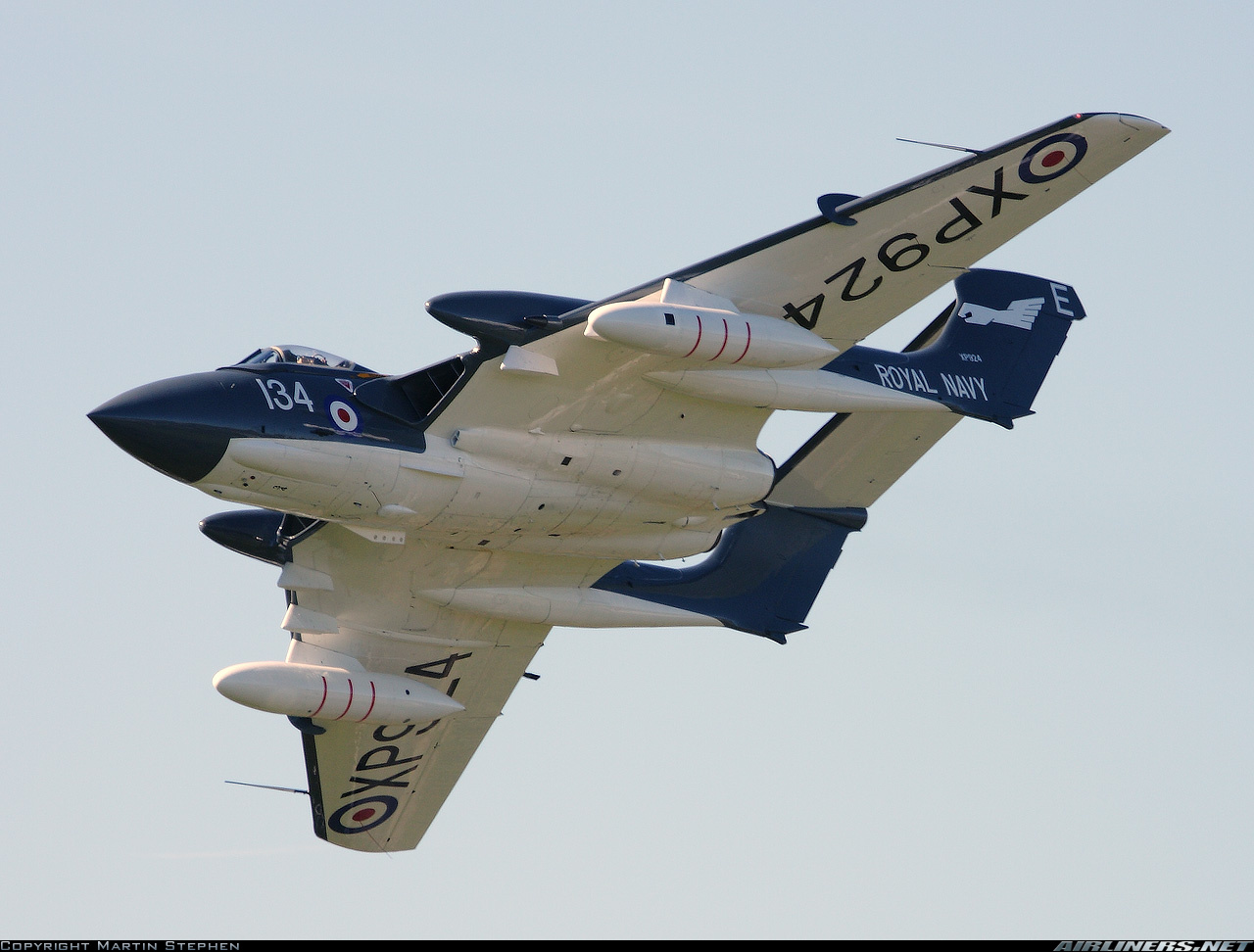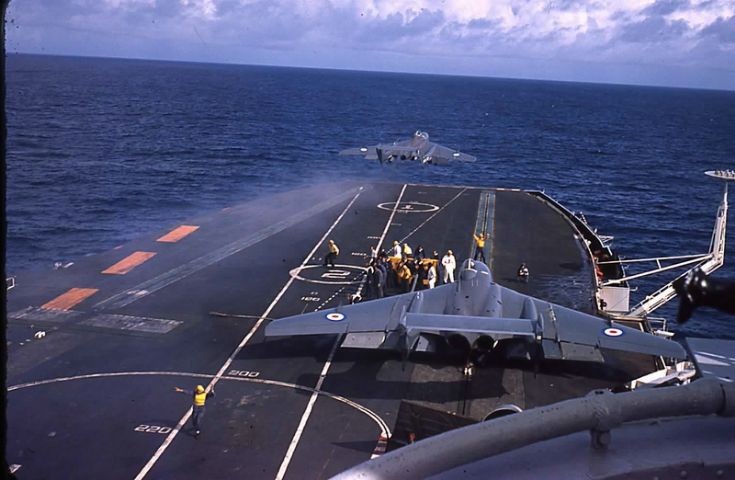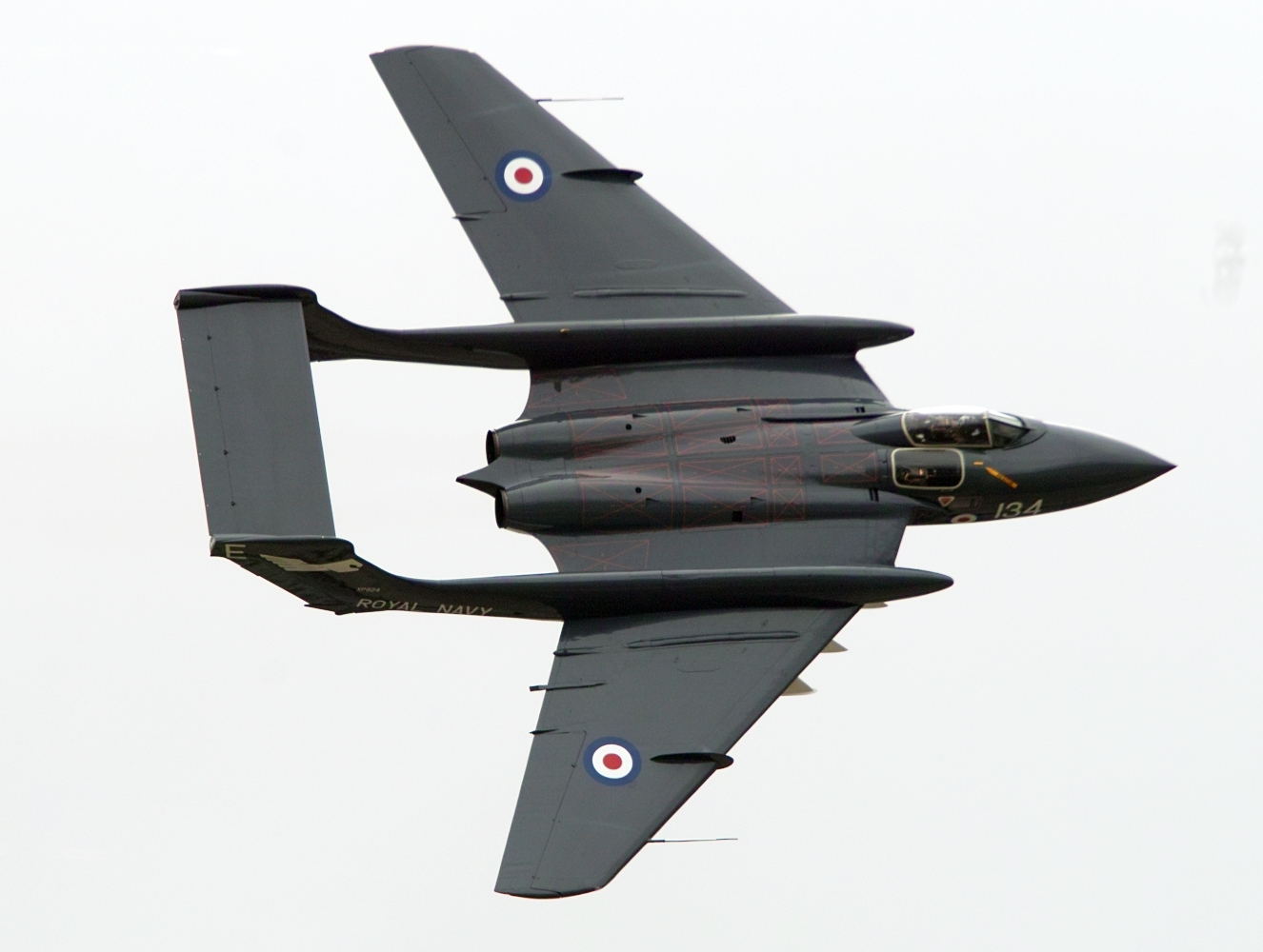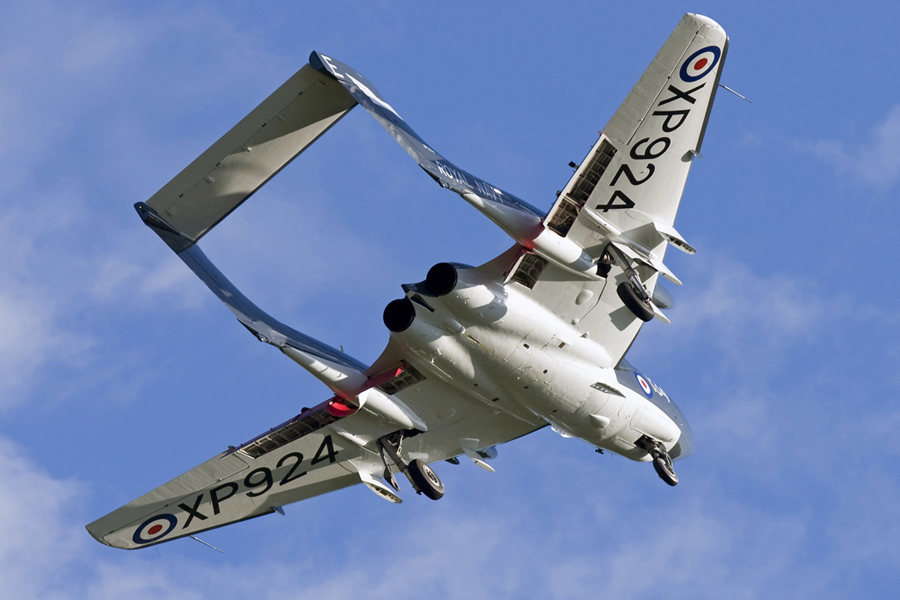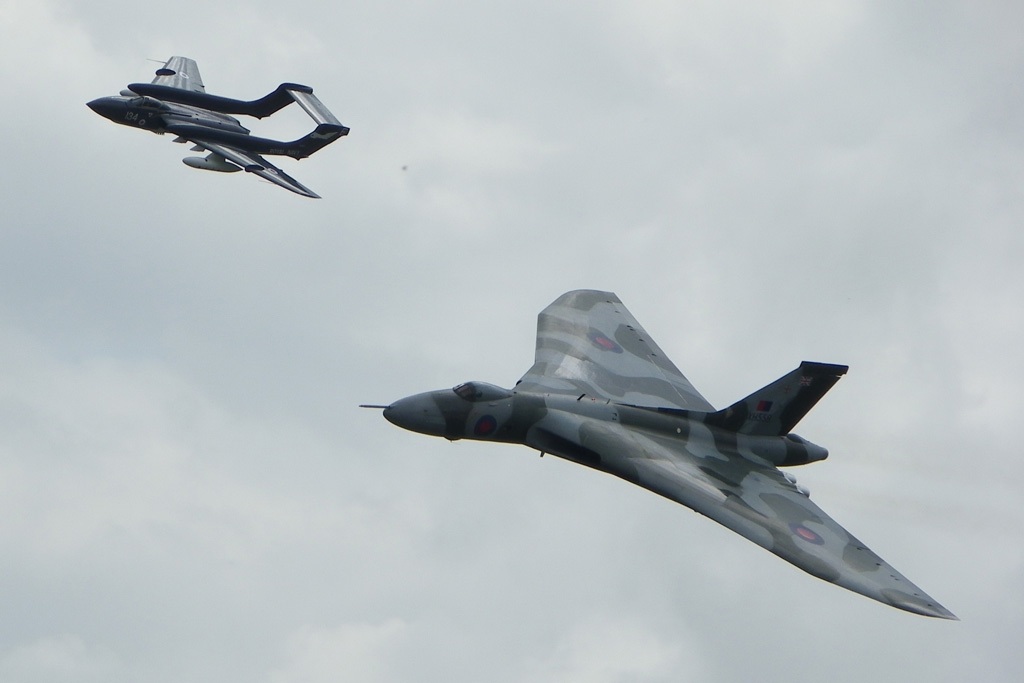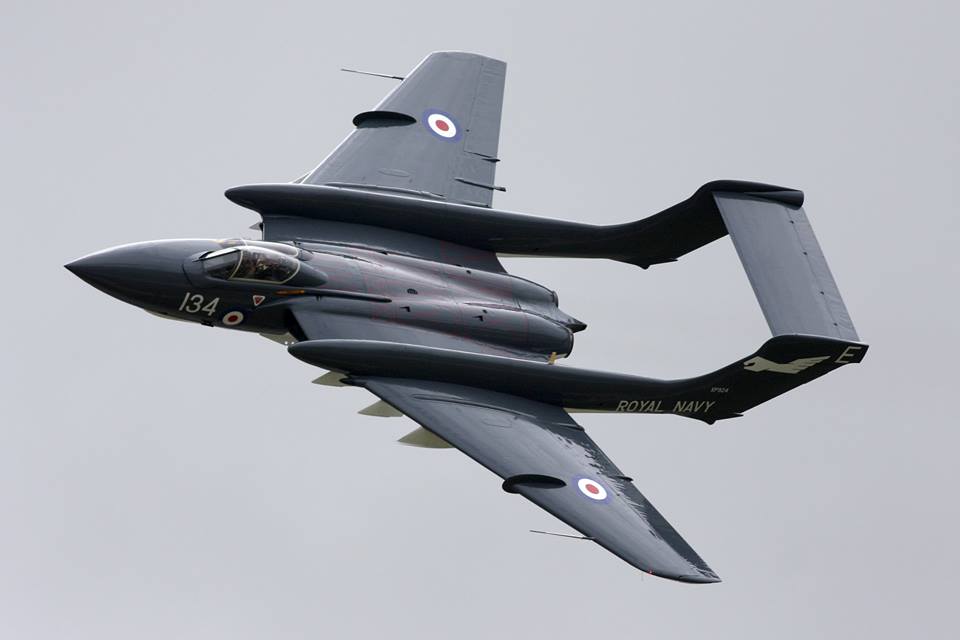The DeHavilland Sea Vixen is a gorgeous vintage jet fighter from the same era as many of the aeroplanes in this series, including the Hawker Hunter, the Tu-95 ‘Bear’ and the Vulcan.
My regular readers will know that although I love modern military aircraft, I have an especial love for jets of the ‘Golden Age’ of combat jets, mainly from the Cold War era.
In that period of history, jets were far from the all-singing, all-dancing marvels of technology that we have nowadays; aircraft like the Typhoon, Tornado and Su-30 which can handle more or less any role that is thrown at them. Back in the late 40’s and early fifties, when the Sea Vixen and its contemporaries were specified, designed and developed, the concept of the jet-powered combat aircraft was still in its infancy. These aircraft were, like most of their contemporaries, right at the forefront of what was possible given the engineering, weapons technology and materials science of the day – still marvels of technology, of course, and even then they were extremely capable aircraft.
And the Sea Vixen was no exception. Powered by two Rolls-Royce Avon 208 engines, she was just capable of supersonic speeds in a shallow dive. She was not only capable of performing her design role as an all-weather fighter, but was also designed to operate as a fighter-bomber as well.
With six weapons pylons (those vertical white parts under the wings, two of which are occupied by white fuel tanks in the above photo), she could carry Red Top or Firestreak air-to-air missiles, fuel tanks, bombs, rocket pods or Bullpup air-to-surface missiles. Although the original design was for the Sea Vixen to carry four 30mm Aden cannon, none were fitted in the production versions.
The thing I haven’t mentioned yet is that the Sea Vixen (although you might have guessed it from the name!) was a carrier-based fighter; that is, she was designed to operate from aircraft carriers, with the Royal Navy’s Fleet Air Arm. A carrier-based aircraft has to be not only built to be capable of performing all its intended roles, but also to be able to cope with the huge stresses of launch from the flight deck of the ship by means of a steam catapult. Landing on an aircraft carrier is even more stressful because you’re thumping some fourteen or fifteen tons of aeroplane down onto a solid deck that is moving in four different directions all at once,* and then being stopped by snagging a big hook under the rear of the aircraft onto a thick cable (known as an ‘arrester wire’) strung across the deck, which yanks you from your flying speed of about 150mph down to a dead stop in a matter of 200 feet or so. Now that means that your aeroplane has to be unbelievably tough! In fact you could even say it’s more like a ‘controlled crash’ than a landing… 😉
Here’s a photo of Sea Vixens operating from the steam catapults of HMS Centaur in 1964:
…and then another of a Sea Vixen less than a second from catching the arrester wire, again on HMS Centaur in 1964:
I have to say at this point that this is what I call amazing flying. Even at Bodmin Airfield, where I have been based for the last few years, the main runway is a mere 600 metres long. That looks tiny from the air, and requires precision flying to get in safely even in an aeroplane that lands at about 50mph and weighs just a bit less than a car. It’s much harder than landing at, say, Exeter, with their 2076 metre tarmac runway, and requires skill and experience. Compare that with landing fifteen tons of metal at 150mph on a pitching, rolling flight deck which looks to be the size of a postage stamp (your landing area is only a few tens of metres!), in the middle of nowhere, maybe in the dead of night, possibly also in atrocious weather – now that takes a level of skill and guts possessed by few individuals. It makes my kind of flying look like a walk in the park. All respect to these guys!
I love the shape of the Sea Vixen; she combines lovely lines, sleek and graceful, with an underlying toughness that is of course essential for a carrier-based aeroplane. Sheer beauty and class.
The Sea Vixen is a really photogenic aircraft, as are many Cold War jets, and she presented some great photo opportunities when recently she flew in formation with other Cold War jets like in the air-to-air picture below (sadly not taken by me!):
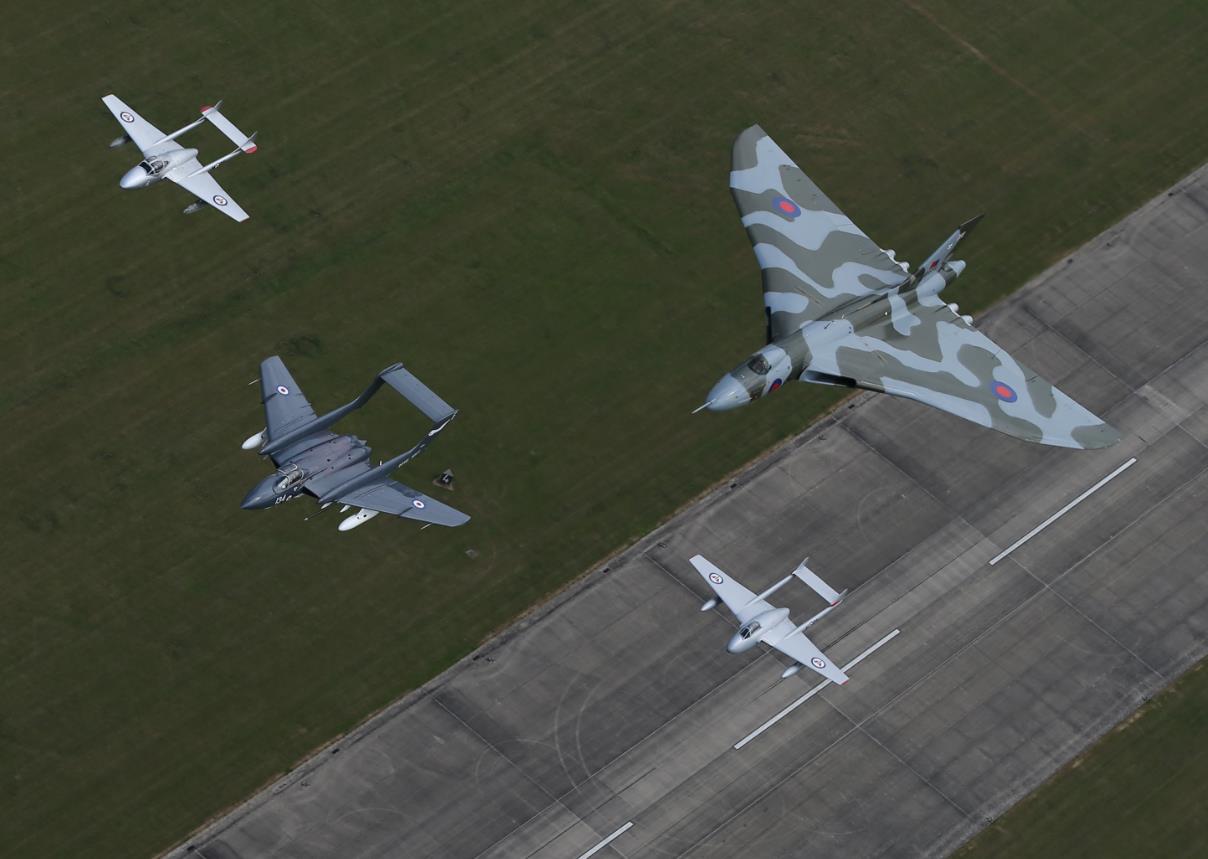
And this is a really lovely shot of the Vixen and the Vulcan together – a sight we shall never see again, since dear old ‘558, the Vulcan, will never fly again:
Finally, here’s a great video of the Sea Vixen in a recent display at RNAS Yeovilton, where she is (very fittingly**) based:
And at the time of writing, I am really looking forward to seeing this aeroplane display again when she comes to the Torbay Airshow, not far from where I live.
Anyway I hope you have enjoyed this little foray, not only into the history of this beautiful aeroplane, but also into aircraft carrier operations and the incredible skill involved in flying aircraft from carrier decks.
Beautiful Destroyer – the Sea Vixen. What a beauty!
*Four directions? Yes: the carrier could be pitching (tipping forwards and backwards), yawing (swinging left and right) and rolling (tipping from left to right) and all the while it is moving forwards through the sea at a speed of something like 35-40mph. At least airfields stay still when you’re trying to land on them; aircraft carriers don’t!
**Why is it fitting that the Sea Vixen is based at Yeovilton? Because that’s the main Fleet Air Arm airfield in the south-west of England (there is another at RNAS Culdrose) and it’s also the location of the Fleet Air Arm Museum which has a huge collection of historic Fleet Air Arm aircraft, and some of their erstwhile enemies too, including a MiG-15. It’s well worth a visit if you’re down this way. And there’s a Sea Vixen among the exhibits there too.


